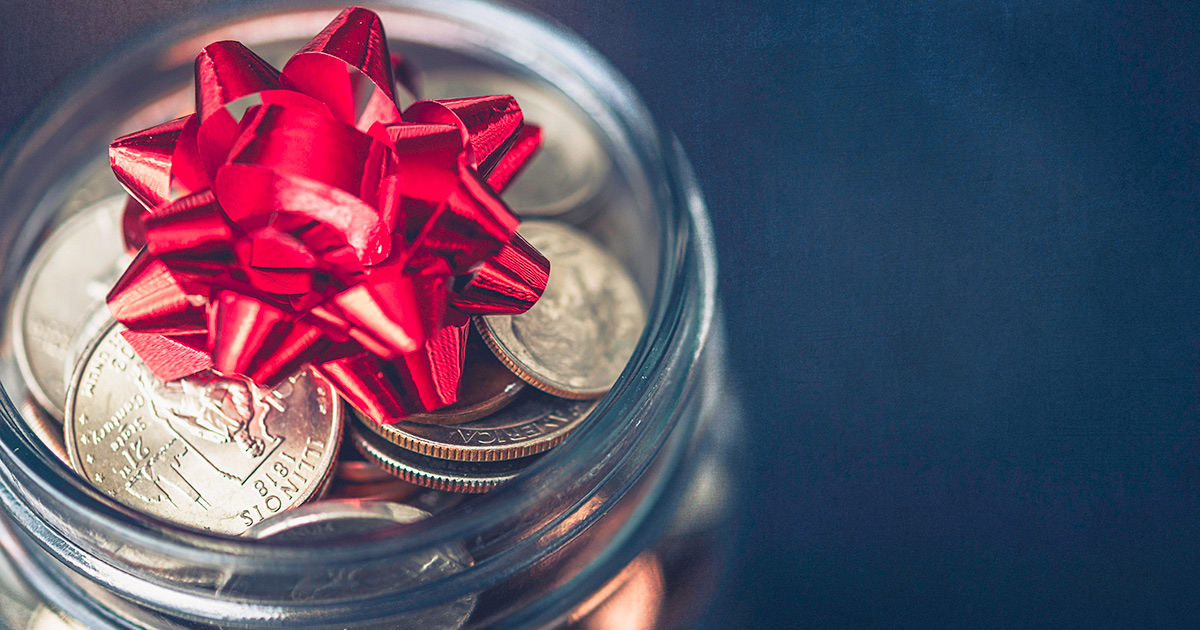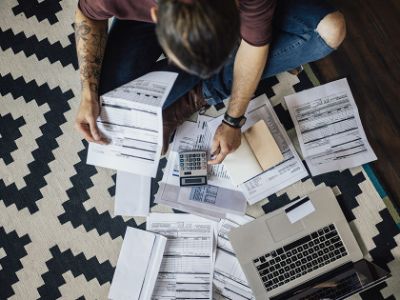An array of holiday parties. Costly travel plans. Carefully planned (or last-minute!) shopping trips. For many of us, "the most wonderful time of the year" usually ends up being the most expensive. Here are some ways to get back on your feet financially after the holidays, so you can face the new year with confidence.
How to get your finances back on track after the holidays
1. Hit "reset" and set a budget.
Whether it's a new dress for the office holiday party or a round-trip ticket from Portland to Charlotte to see your extended family, the holidays can be costly. But once it's over and you are back into your regular routine, it's a great time to sit down and put together a budget. Not sure how to make a budget? Follow these steps to get started:
- Identify your goal. Define what your overall goal is — such as paying off credit cards or buying a home.
- Track your spending. If you try to create your budget without knowing what you spend money on, you'll end up guessing on a lot of expenses. Start by tracking what you’re currently spending. These days, tracking expenses is easy with free websites and apps.
- Figure out your monthly income. If you only have one source of income — your full-time job — this step should be fairly easy. You'll want to use your net income, which is the amount you are paid (also called "take-home pay") after taxes and deductions are taken out, to create an accurate picture of what you really have to spend each month.
- Create your budget. Now you should have all the information you need to begin putting your budget together. You can use one of the free websites, apps, a computer program or simply a pen and paper.
2. Build an emergency savings fund.
An emergency fund is a critical (yet often overlooked) first step toward overall financial security. It gives you a financial safety net in case an immediate expense arises — such as a deductible for auto insurance or a busted furnace. Or something unforeseen that has a long-term impact, like a sudden illness or job loss.
Having this fund on hand can reduce the need for you to use a credit card, dip into your savings or take out a costly loan in order to cover the expense. When thinking about an emergency fund, many people’s first question is, “How much savings should I have?” The answer depends on your monthly expenses. In general, most financial planners recommend setting aside 3-6 months' worth of living expenses.
3. Take a break from credit cards and short-term loans.
With the convenience of using a credit card and the easy availability of holiday loans, it usually doesn't take long for those holiday purchases to add up to hundreds, even thousands of dollars. Plus, any outstanding amounts are all compounded by the interest rate you're charged over time. That’s why figuring out how to pay off credit cards and other debt is so important.
Here are some tactics to try to stay out of the debt trap for next year's holiday season:
- The best approach is to pay off the balance of your entire credit card bill each month. This helps you avoid interest charges when the balance is paid in full during the grace period.
- If you can't afford to pay your bill in full each month, pay as much as you can — and pay on time. Late payments can incur heavy penalties that ultimately increase your interest and balance. Consider that if you can't pay your balance in full each month, your spending may be out of line with your income.
- Another good habit is to avoid charging more on your credit cards until your balance is at zero. And resist opening up new credit card accounts while you still owe money on current ones.
- It's a good idea to check your credit score, which may have taken a hit over the holidays due to having too many cards in your name, getting too close to your credit limit, failing to make a payment on time or even someone charging items to your credit card without your knowledge.
4. Pay off debt.
Paying off credit card debt and other obligations frees up money for your future financial goals. Here are two common strategies for paying off debt:
Snowball approach: With this strategy, you pay off your smallest debt first. As each debt is paid off, use the money you were putting toward that debt to pay off the next biggest debt. Crossing these smaller debts off your list in the early stages will give you the motivation to keep going.
Avalanche approach: The avalanche strategy calls for paying off the debt with the highest interest rate first. When that debt is paid off, use the money you were putting toward it to pay down the debt with the next highest interest rate.
Once you've got a handle on your discretionary savings and have freed up some of your income, try to save and invest 5-10% of it in a savings account. Have a small amount transferred automatically from your paycheck to a savings account or employer-sponsored investment vehicle. Because if you don't see it, you don't miss it.



